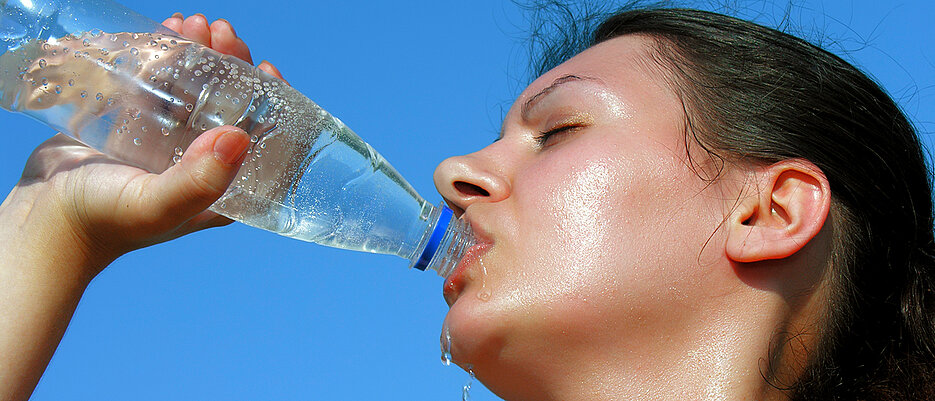New test enables a more reliable diagnosis
08/01/2018On their quest to finding a better way to diagnose the condition, scientists have now reported a success. Their approach provides a correct diagnosis more quickly and reliably.

When people produce excessive amounts of urine – more than three litres each day in adults is considered too much – doctors often find it difficult to establish a diagnosis under certain circumstances. In addition to "normal" diabetes which is easy to diagnose by measuring blood glucose levels, there are three major causes that can trigger the disorder: Firstly, insufficient production of the hormone vasopressin, which regulates the amount of urine. In this case, the diagnosis would be "central diabetes insipidus". Secondly, reduced sensitivity of the kidneys to this hormone which would favour the diagnosis of "nephrogenic diabetes insipidus". Or thirdly, greatly increased fluid intake in which case doctors speak of primary polydipsia, a form of excessive thirst caused by habit over time or as a symptom of mental illness.
Incorrect diagnosis can be life-threatening
"It is crucial to differentiate between these entities because their treatment is fundamentally different. Diabetes insipidus must be treated with the hormone vasopressin whereas patients suffering from primary polydipsia need behavioural therapy aiming to reduce their habitual drinking. Incorrect treatment can have lethal consequences because administering vasopressin without indication can lead to water intoxication," says Professor Martin Fassnacht. He is the head of the Department of Endocrinology and Diabetology at the Würzburg University Hospital.
Würzburg hormone researchers have been looking for better methods to diagnose the different disease types. For this purpose, they teamed up with Professor Mirjam Christ-Crain from the University Hospital of Basel and Dr. Wiebke Fenske, a former endocrinologist in Würzburg and private lecturer who presently works at the University of Leipzig. The scientists have now published the results of the international study in the current issue of the journal New England Journal of Medicine.
Standard test complex and inaccurate
"The existing diagnostic gold standard is the so-called fluid deprivation test," Dr. Irina Chifu explains; she had been substantially involved in caring for a lot of the patients in Würzburg. When using the "water deprivation test", patients are not allowed to drink anything for 17 hours. Their urine output, blood pressure, pulse and weight are measured before and after the test and blood samples are taken repeatedly to determine specific parameters.
The water deprivation test is the current gold standard test to diagnose diabetes insipidus, but the doctors are not happy with it. "It is technically complex and frequently inaccurate," Fassnacht explains.
The new test method
Based on an idea of Professor Bruno Allolio, the former head of the Würzburg Endocrinology Department, the patients underwent a second test. The participants received a specific amount of hypertonic saline solution as an infusion. Regular blood samples were also taken to test the composition and specific components in the blood. The international team's focus was on the biomarker copeptin, a precursor hormone of vasopressin, which is much easier to measure in the laboratory. The goal of the study was to find out whether the concentration of copeptin after administering the hypertonic saline infusion test was better suited to diagnose the condition than the fluid deprivation test.
The results
Overall, 156 patients with excessive urine production participated in the study over a period of five years in eleven medical centres worldwide, of which 45 patients were from Würzburg. It turned out that the hypertonic saline infusion test with copeptin measurement delivers a much more accurate diagnosis: 97 percent of all patients were correctly diagnosed with this approach, whereas the more complex water deprivation test was correct in less than 75 percent of patients.
Accordingly, Fassnacht is quite certain: "Measuring the copeptin concentration in the blood after a saline infusion is clearly superior to the liquid deprivation test to differentiate diabetes insipidus from primary polydipsia." And also the publishers of the New England Journal of Medicine comment that the new test will become the gold standard in this situation.
A Copeptin-Based Approach in the Diagnosis of Diabetes Insipidus. Wiebke Fenske, Julie Refardt, Irina Chifu, ..., Martin Fassnacht, and Mirjam Christ-Crain. New England Journal of Medicine, DOI: 10.1056/NEJMoa1803760
Contact
Prof. Dr. Martin Fassnacht, Head of Endocrinology and Diabetology, University Hospital Würzburg T: +49 931 201-39021, Fassnacht_M@ukw.de






